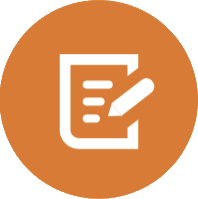Whether you’ve received a referral for an ultrasound or are exploring your options on your own, we’re here to help you understand what comes next. This page covers everything you need to know about an ultrasound— from how to prepare beforehand, to what to expect during the exam, and how to proceed afterward.
What is ultrasound?
Ultrasound uses a handheld device, called a transducer, that sends out sound waves. The sound waves move through the body, bounce off organs, and return back to the transducer. These waves are then processed by computer technology to create real-time views of organs and tissues.
Before Your Appointment
SCHEDULING YOUR EXAM
There are several easy ways to schedule your exam, choose the option that works best for you.

1. Schedule Online
If you're a Weill Cornell Medicine (WCM) patient and an imaging exam has been ordered for you, you will receive a link to schedule online.

2. Request Online
Not a WCM patient? Request an appointment to schedule by securely uploading your prescription.

3. Call Us Directly
Call 212-746-6000.
Mon-Fri: 8AM to 7PM ET
Sat-Sun: 9AM to 5PM ET
Our Locations that Offer Ultrasound
- David H. Koch Center (Upper East Side)
- Starr Pavillion (Upper East Side)
- Iris Cantor Women’s Health Center (Midtown East)
- Upper West Side
- Lower Manhattan
- Long Island City
Complete Your Forms Easily
Log in to Weill Cornell Connect to complete your safety forms ahead of time using eCheck-In. It’s quick and helps save you time on the day of your appointment.
Don’t have an account? Join today!
Preparing for Your Exam
When scheduling and checking in for your appointment, please let our staff know if any of the following apply:
You need an interpreter in your language.
FAQ
During Your Appointment
How is an ultrasound performed?
- You will be comfortably positioned on an ultrasound table.
- The technologist will apply a gel-like substance to the area being examined. The gel helps sound waves travel from the transducer and into your body.
- As the technologist gently moves the transducer over your skin, the information from the sound waves creates real-time images on a computer screen.
- In some cases, the transducer may be inserted into an opening of the body, such as the vagina or rectum, to view internal structures more clearly. If you feel any discomfort during the exam, notify your technologist right away.
After the Scan is Completed
The technologist will escort you to your locker to collect your belongings. Our staff will assist you with check-out.
After Your Appointment
Aftercare
You may resume all regular activity unless otherwise directed by your physician.
Imaging Review
Once the technologist has taken your images, a radiologist will review the images and write a detailed report. Our radiologists specialize in imaging for specific areas of the body, ensuring you receive the highest-quality, expert interpretation every time. Our specialties include:
- Abdominal
- Breast
- Cardiothoracic (Heart and Chest)
- Molecular
- Musculoskeletal
- Neuroradiology (Brain, Head, Neck and Spine)
- Pediatrics
Receiving Your Results
Your report will be automatically shared with you and your referring provider within 24-48 hours. You can view your images and reports through Connect. Use this guide to get started.
Sharing Your Results
All imaging exams performed at Weill Cornell Imaging will be available to you in Connect. If you'd like to keep other members of your care team informed, you can easily share your results with any additional providers.
For other medical records requests, visit our Medical Records page.
Understanding Your Results
Please contact your referring provider to discuss your results. They will help explain your imaging report and answer any questions you may have.
If you or your provider have additional questions, our Reading Room Coordinators (RRC) will help connect you with a radiologist.
For more information or to contact an RRC, visit this link.


